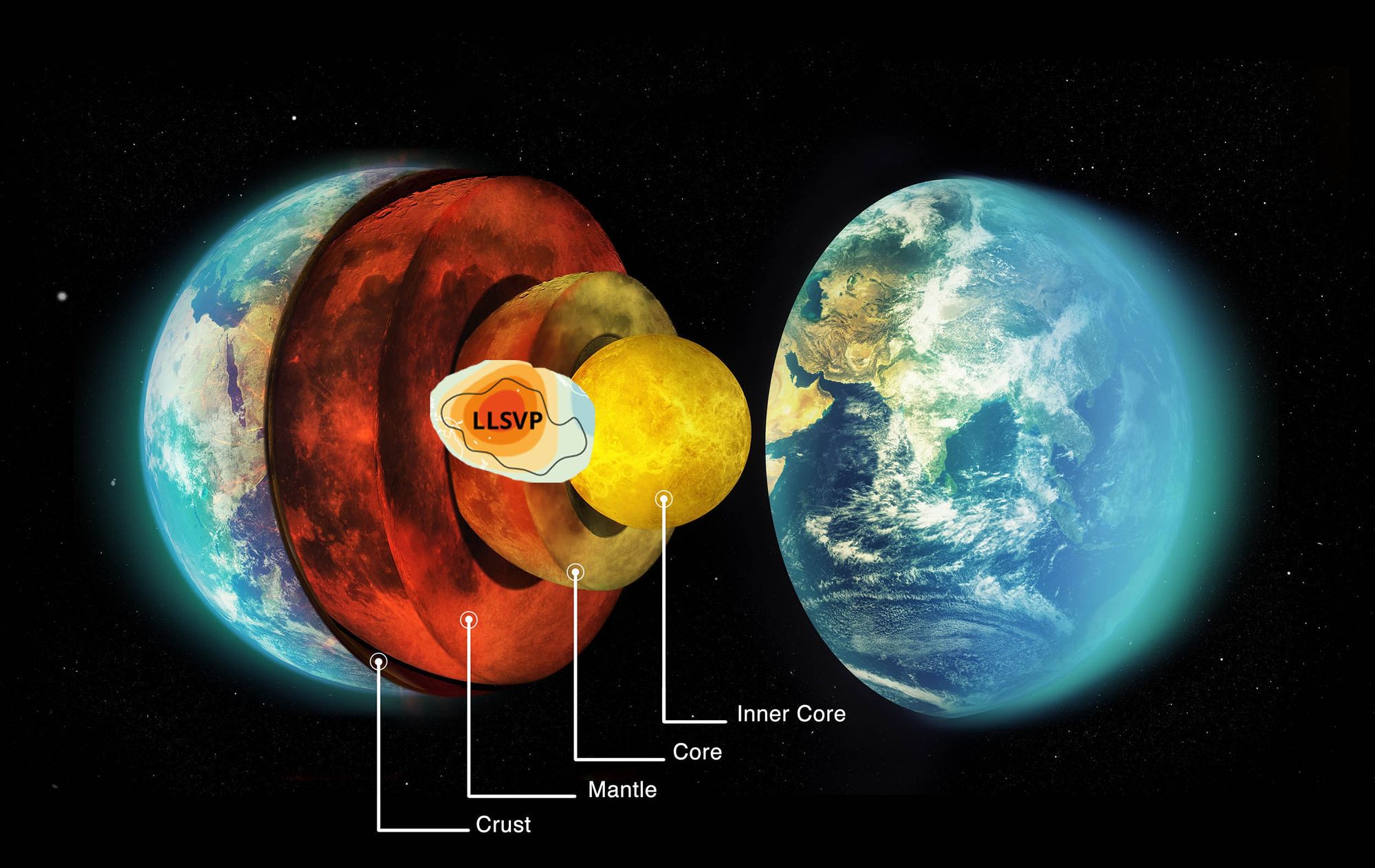Scientists Uncover 'Islands' in Earth's Mantle, Challenging Longheld Theories

A groundbreaking study published in Nature has revealed that two enormous, continent-sized regions deep within the Earth's mantle, known as "islands", are hidden from view. These ancient structures, located beneath Africa and the Pacific Ocean, have been puzzling scientists for decades, forcing a significant shift in our understanding of the Earth's interior.
Conducted by researchers at Utrecht University, the study used seismic analysis to identify the Large Low Seismic Velocity Provinces (LLSVPs), which are characterized by their distinct low velocity. The findings suggest that these regions have been stable for millions or even billions of years, challenging the conventional theory that the mantle is a well-mixed and rapidly flowing system.
The LLSVPs are estimated to be around 620 miles high, dwarfing every mountain peak on Earth's surface and other planets in our solar system. They are buried approximately 1,200 miles beneath the surface, making them inaccessible to direct human observation.
"These 'islands' are a game-changer for our understanding of the Earth's evolution," said Arwen Deuss, senior author of the study and seismologist at Utrecht University. "They reveal that the mantle is not as uniformly mixed as previously thought, but rather contains ancient, stable structures that have been shaped by millions of years of geological processes."
The discovery was made possible by incorporating a novel approach to studying seismic waves, which allowed researchers to measure the "damping" or energy loss of these waves as they traveled through the Earth. By analyzing this data, scientists found little damping in the LLSVPs, contradicting previous expectations.
Mineralogical analyses suggested that the unique properties of the LLSVPs can be attributed to grain size. The regions consist of much larger grains than those found in surrounding slabs, allowing waves to pass with minimal energy loss. This, in turn, suggests that the LLSVPs are extremely ancient and have remained largely unchanged over vast periods.
This breakthrough has significant implications for understanding Earth's evolution and surface phenomena such as volcanism and mountain building. The study of these "islands" offers a new perspective on the complex inner workings of our planet and contributes to the ongoing efforts to model the Earth's dynamic interior.
Related News
- Scientists uncover new evidence of ancient human civilization in Africa [link]
- Study reveals groundbreaking insights into the Earth's climate history [link]
Stay up-to-date with the latest news from Alayaran.com.
